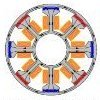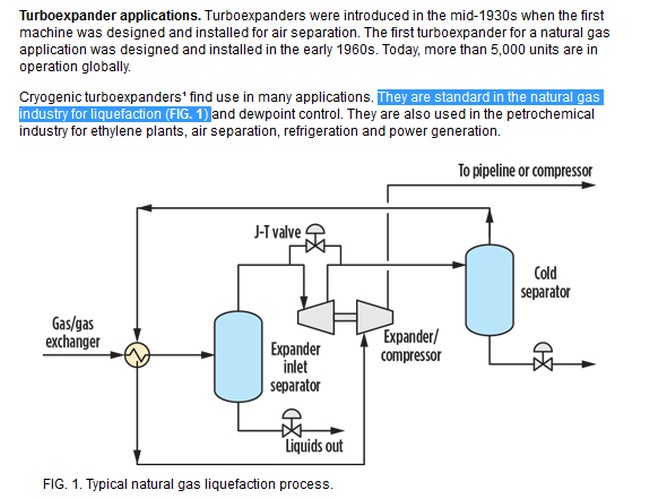Leaderboard
Popular Content
Showing content with the highest reputation on 05/12/21 in all areas
-
Question: Why don't blind people bungee jump? Answer: Because it scares the fuck out of the dog.2 points
-
😁 Well said! On the OP though, time travel is allowed for by GR and the laws of physics. The following link explains.......https://plus.maths.org/content/time-travel-allowed2 points
-
1 point
-
1 point
-
https://phys.org/news/2021-05-discovery-geologic-plate-tectonic.html Discovery of new geologic process calls for changes to plate tectonic cycle: Geoscientists at the University of Toronto (U of T) and Istanbul Technical University have discovered a new process in plate tectonics which shows that tremendous damage occurs to areas of Earth's crust long before it should be geologically altered by known plate-boundary processes, highlighting the need to amend current understandings of the planet's tectonic cycle. Plate tectonics, an accepted theory for over 60 years that explains the geologic processes occurring below the surface of Earth, holds that its outer shell is fragmented into continent-sized blocks of solid rock, called "plates," that slide over Earth's mantle, the rocky inner layer above the planet's core. As the plates drift around and collide with each other over million-years-long periods, they produce everything from volcanoes and earthquakes to mountain ranges and deep ocean trenches, at the boundaries where the plates collide. Now, using supercomputer modelling, the researchers show that the plates on which Earth's oceans sit are being torn apart by massive tectonic forces even as they drift about the globe. The findings are reported in a study published this week in Nature Geoscience. more at link................ the paper: https://www.nature.com/articles/s41561-021-00746-9 Pre-collisional extension of microcontinental terranes by a subduction pulley: Abstract: Terrane accretion is a ubiquitous process of plate tectonics that delivers fragments of subduction-resistant lithosphere into a subduction zone, resulting in events such as ocean plateau docking or continental assembly and orogenesis. The post-collisional extension of continental terranes is a well-documented tectonic process linked with gravitational collapse and/or trench retreat. Here we propose that microcontinental terranes can also undergo a substantial extension before their collision with the upper plate, owing to pull from the trenchward part of the subducting plate. Forward geodynamic numerical experiments demonstrate that this pre-collisional extension can occur over a protracted phase on microcontinents that are drifting towards a subduction zone, which distinguishes the deformation from post-collisional extension on the overriding plate, as is traditionally postulated. The results show that the magnitude of pre-collisional extension is inversely correlated with the size of the microcontinental terrane and imposed convergence velocity. We find that locations along the Tethyan belts, namely, the Sesia zone and Eastern Anatolia, are evidence for this style of pre-collisional extension, as this mechanism reconciles with geothermobarometric data and kinematic analyses. The operation of this subduction pulley reveals that drifting lithospheric plates may undergo substantial tectonic events before the arrival and involvement with regular plate boundary processes.1 point
-
Maxwell, Stokes and others worked all this out in great detail in the early to mid 1800s. But they rejected these mechanical models is unsatisfactory for a variety of reasons, and finally devised experiments to disporove aether models once and for all. How much less satisfactory do you think we now find them 150 years alter, armed with our greater knowledge and many, more refined experiments ?1 point
-
So, using water which expands on freezing, you expect a higher pressure on th day-to-night freezing interface, and a lower pressure on the night-to-day thawing interface, leading to a pressure gradient, and a net flow of water, from which you hope to generate power. Obviously if a liquid other than water was used, that doesn't change density on freezing, you would have no pressure gradient, and no flow. The frozen section would just move around following the night-side. But what if you had any other liquid that contracts on freezing. Your analysis would then indicate a reverse pressure gradient, and a flow in the opposing direction ?1 point
-
I was reflecting on the ice engine today. It's quite an ingenious and entertaining idea, albeit an impractical one. The feature of it that differs from most heat engines is that it exploits the change in volume due a phase change in the working fluid, rather than the expansion on heating a gas. It occurred to me that this is also true of the earliest steam engines. These were "atmospheric engines", in which the power stroke exploited the reduction in pressure when the steam in the cylinder was condensed, by the injection of a cold water spray. So here, as in the ice engine, a power stroke is produced by a phase change, and is accompanied by a release of Latent Heat, whereas the heat input to the engine takes place on the return stroke, i.e. as the cylinder is refilled with steam. It seems that this feature - of the heat input taking place on the return stroke - is what is bothering @Tom Booth Perhaps he should think about Newcomen's atmospheric engine for a bit......1 point
-
What about a proton and a positron? Same mass relationship, but a repulsive force. But electrons do more than "not get close to each other" - they actively repel, with the same force as exists between two protons. The electrons are pulled with the electrostatic force. Deuterium doesn't have twice the attractive force on an electron owing to the extra neutron. The effect is small, owing the different reduced mass of the system, which shifts the energies a small fraction of a percent - not anywhere close to a factor of 2.1 point
-
Good point. I think before the universe was vacuum-dominated, the calculation with just energy density of matter and radiation works quite well, and you can actually do the calculation by Newton's gravitation, the result giving coincidence between Schwarzschild's radius and radius of observable universe. I suppose you could do the trick of including an additional term to the total content of the energy by adding vacuum energy, then you would have to recalculate Schwarzschild's radius and everything would check again.1 point
-
No, they're different by a factor of about 3 An interesting question might be whether they had similar values at some time in the past. With less expansion I would expect the difference between (age)*(speed of light) and Rs is smaller.1 point
-
Thank you @beecee that is enough to get the gist of it. Turkish - When I tried to follow your link the first time I saw mention of the Univesity of Istambul and examples in Turkey. The idea that the subducting plate is drawn ever more steeply downwards and eventually breks off has been around for quite some time. Ted Nield details the evidence for this in his 2007 book Supercontinent. The mechanical model of the dashpot, pulley and tension connections is new to me at least and interesting to consider. I wonder how many such situations there are (were) around the globe ? Thank you for a good response and an interesting article now I understand what it is all about. +11 point
-
Also to emphasize that the article I linked also shows that the US private space sector has raised much more than the Chinese private sector.1 point
-
At the risk of again having my request being turned down as you theatrically 'yawn', could you be so kind as to provide a citation for your claim? According to everything I can find, the US spends significantly more than China on space exploration. For example... https://www.cfr.org/backgrounder/space-exploration-and-us-competitiveness1 point
-
Turkish? 😉 from the article..... illustrative Elements of a newly discovered process in plate tectonics include a mass (rock slab weight), a pulley (trench), a dashpot (microcontinent), and a string (oceanic plate) that connects these elements to each other. In the initial state, the microcontinent drifts towards the subduction zone (Figure a). The microcontinent then extends during its journey to the subduction trench owing to the tensional force applied by the pull of the rock slab pull across the subduction zone (Figure b). Finally, the microcontinent accretes to the overriding plate and resists subduction due to its low density, causing the down-going slab to break off (Figure c). Credit: Erkan Gün/University of Toronto There is also an illustrative video1 point
-
Quite often the decays will strip electrons (shake-off electrons) as the charged particle is emitted/ejected. In alpha and beta decays. “The charge distributions of several alpha emitters were studied29-33 and they varied from -1 to +10 in the absence of internal conversion. Approximately 90% of the recoiling atoms carried zero or +1 charge and the mean charge was less than 1” https://www.osti.gov/servlets/purl/4262551 So at least 1 shake-off electron, and often 2 or 3. Sometimes more.1 point
-
The expansion on freezing is only about 9% volume, so the work done in expansion when the pressure is released is not that much - enough to bust the container but not much more. There is very little stored energy. You get a lot more stored energy in compressed gases than you do in compressed liquids and solids, because gases expand to many times the confining pressure, doing a lot more work (= energy). That's why heat engines rely on gases.1 point
-
Technically, I already have. Thanks, though1 point
-
Somehow, I can't picture Bicellum brasieri making stone tools or grooming its buddies.1 point
-
1 point
-
It goes back to my statement that the "ice bomb engine" does NOT use ambient heat to do work at all. You said: "yes it does". My point is, no, it doesn't. Saying the ice bomb engine uses heat to expand is like saying that my car runs on sunlight. I'm saying: no, it runs on gasoline. Ultimately, it can be conjectured that my car does indeed run on sunshine, and in a roundabout way this is correct, but the reality is, my car does not run on sunshine it runs on gasoline. You can trace the potential energy all the way back to the big bang if you want, but the fact remains, practically speaking, sunlight is not the immediate primary cause that enables my car to run, the sun shining or not shining has no immediate bearing or direct influence on the operation of my car, which continues running just fine long after sunset. The "potential energy" stored in liquid H2O is no longer HEAT any more than gasoline is actual sunshine. You then go on: What? If I carry a bowling ball up a hill, it "stores" potential energy, metaphorically speaking. The potential energy cannot "flow out" of my bowling ball, or anything else. Potential energy is not a substance that can be carried around like water in a bucket and poured out.-1 points
-
Who I was responding to is right there in the quotation box. How about you stop devolving the conversation into petty attempts at character assassination. If you are unfamiliar with such a use for turbo-expanders, I can provide references, if not banned from the forum before given a chance, which is usual for this juncture. We are talking about turbo-expanders used for gas liquefaction are we not? http://gasprocessingnews.com/features/202006/fundamentals-of-turboexpander-design-and-operation.aspx-1 points
-
What? It's friggin' common knowledge except maybe for (some) in the industry who try to guard it like a trade secret. Which to some degree it (sort of) is. But do you read: "standard in the natural gas industry for liquefaction." not as you suggest "malpractises". At any rate a long way from "Never".-2 points










